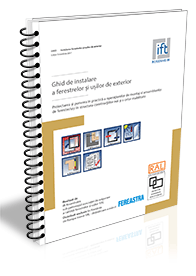| NEWS Objectives: market repositioning and sales professionalization |
| English Section Publicat de Ovidiu Stefanescu 27 Mar 2013 15:18 |

If we analyze the results of companies working on the thermo-insulating joinery segment in Romania, the year 2013 began under negative auspices for the branch. It is true that the evolution of the sector cannot be estimated according to the situation of the first few months, given the cyclicity of the demand in the segment, which records a minimum during winter. Even though the cold season has not been that unfavourable to the current construction projects as it was in 2012, the potential beneficiaries do not choose this interval in order to install the windows, given the disadvantages caused by the decrease of thermal comfort. The most worrying fact is that the “working front” that would be necessary for a normal course of the manufacturing / assembling operations is missing. New buildings fail to rise up (these have not reached yet not even the stage of completion for foundations), although, in theory, there would be a demand for various types of buildings, whether if we speak about residential, commercial or administrative objectives. This state of facts has also an important psychological impact on the managers of joinery companies, who, amid a prolonged lack of orders, can take into account in the end even the idea of bankruptcy. However, for those who have the ability to overcome current barriers, some signs that could represent the sources of future growth in the analyzed segment are envisaged. Obviously, one cannot talk yet about undeniable reasons for optimism, but the existence of some elements that constitute themselves into factors which encourage a positive attitude cannot be challenged. One element that should be taken into account and which has a unique note in the context of a prolonged recession is the possibility of resuming the works on specific projects which are in various stages of completion and which remained preserved after 2009. For the window and curtain walls industry, that amount may seem insignificant, comprising no more than two up to three hundred million EUR at national level, but for a field which is - basically - in collapse, it could become a real „safety belt”. For further information and a detailed analysis of the current Fereastra issue, click here!
|
ABONARE REVISTA (click aici): PROIECTE | INVESTITII | REVISTE | INDEX COMPANII
DATE DE CONTACT: Agenda Constructiilor & Fereastra - Tel/Fax: 021-336.04.16, 031-401.63.88
Stiri & Comunicate
Documente
31 mai 2023
31 mai 2023




















































